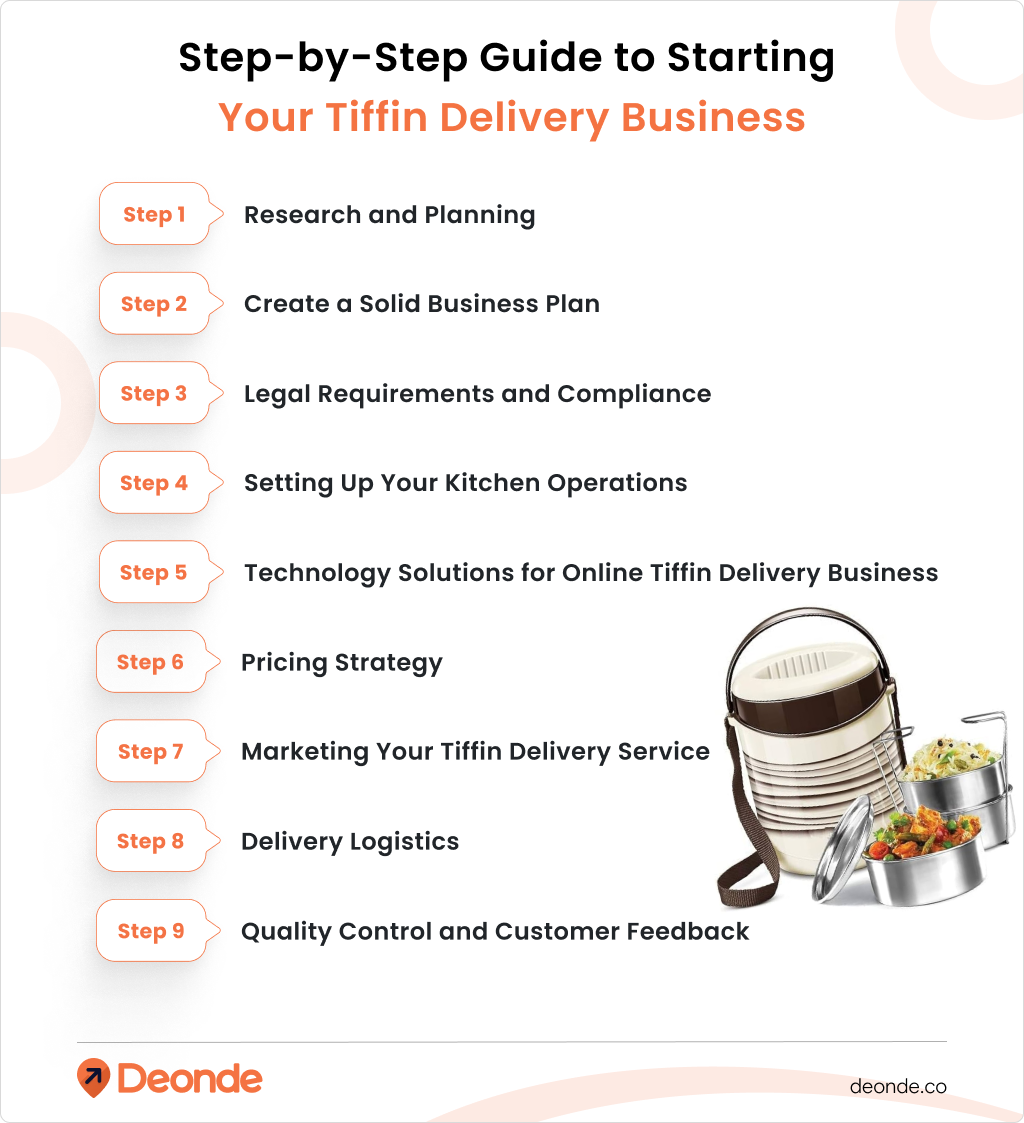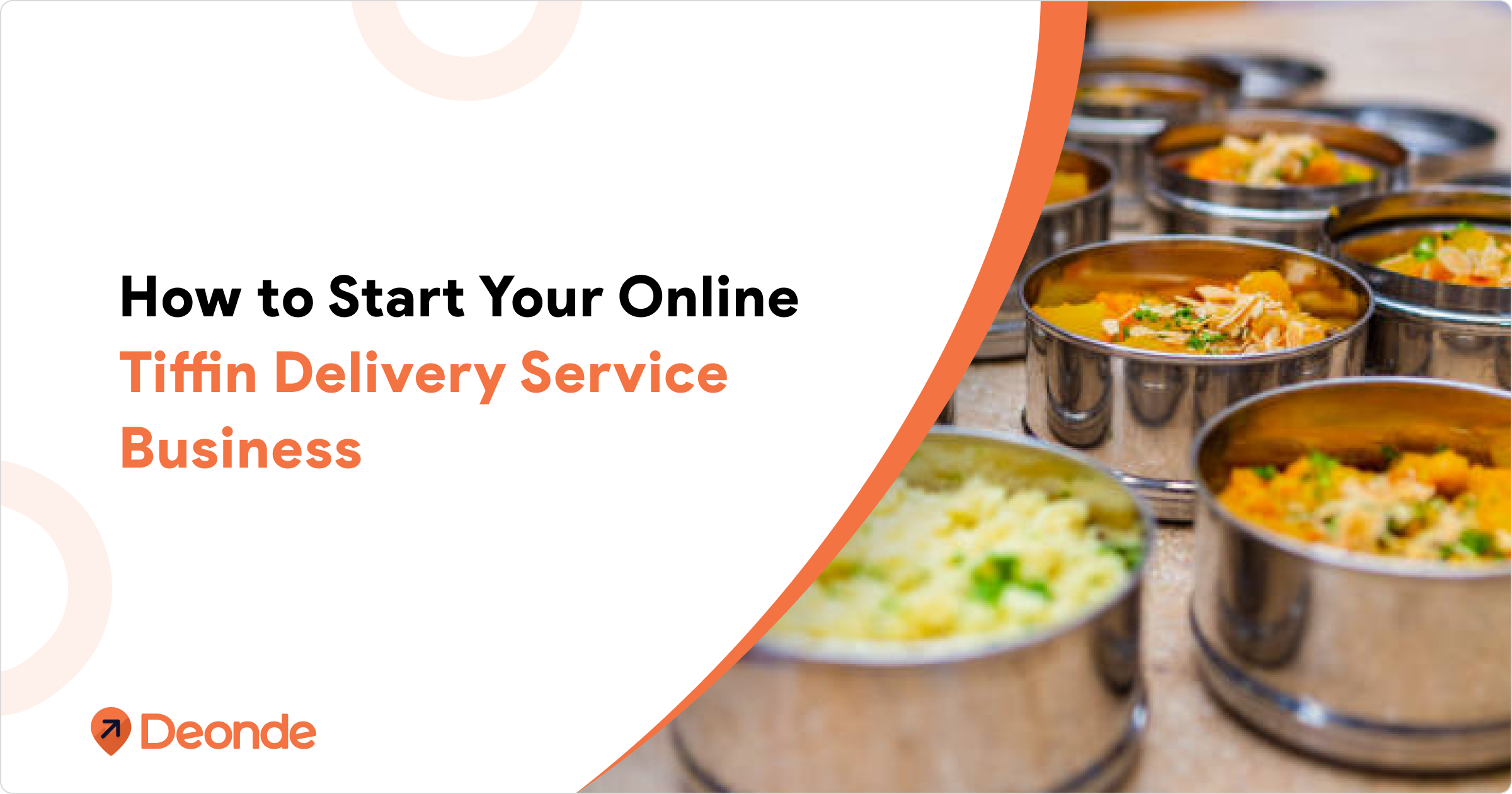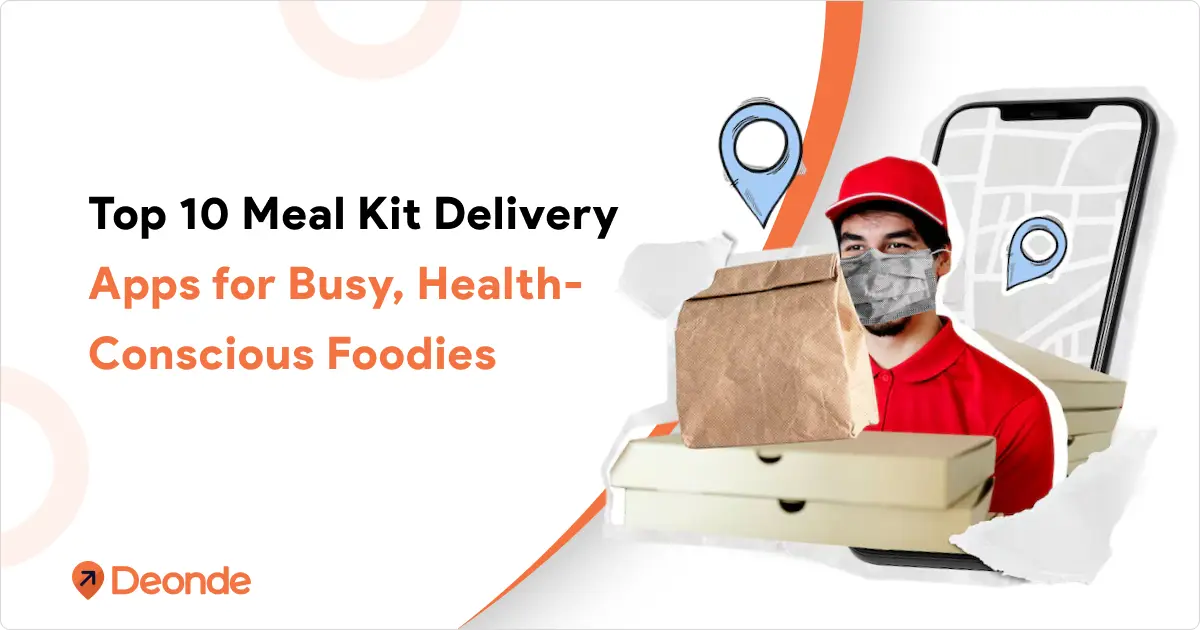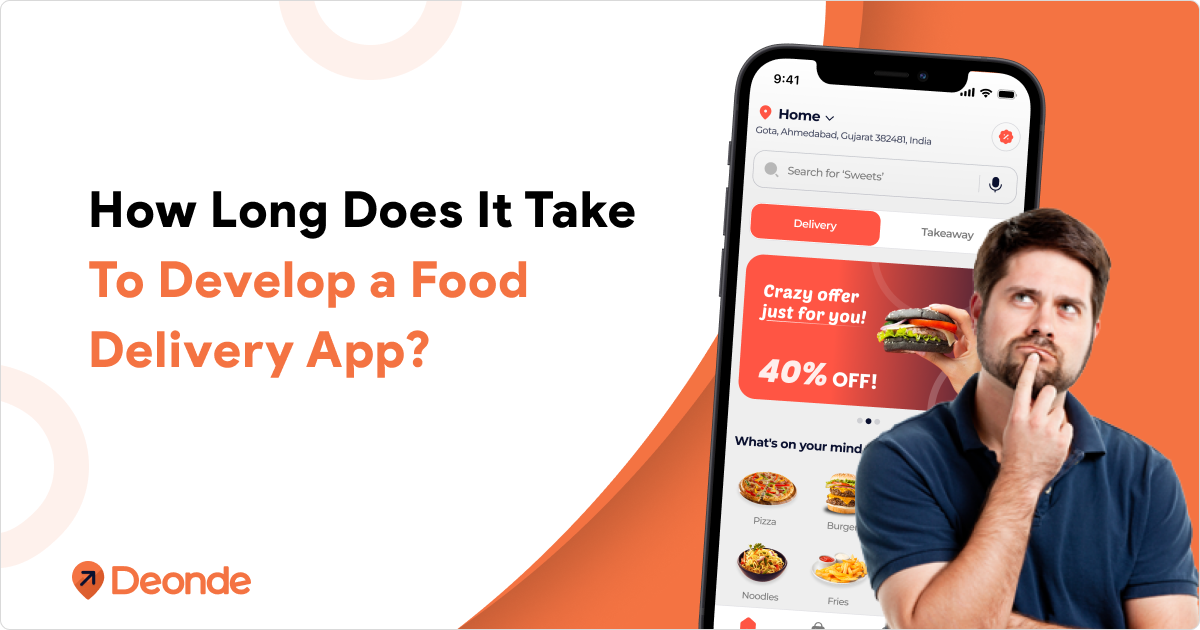Are you passionate about cooking and dream of turning your culinary skills into a profitable business? Starting an online tiffin delivery service could be your perfect opportunity in 2025. The demand for homemade, healthy meals delivered straight to customers’ doorsteps has skyrocketed in recent years, creating an exciting market for entrepreneurs.
In this comprehensive guide, we’ll walk you through everything you need to know about launching a successful tiffin delivery business in 2025. From market research and legal requirements to technology solutions and marketing strategies, we’ve got you covered.
Market Overview: The Booming Tiffin Delivery Industry
Current Market Size and Growth Projections
The online food delivery industry continues to expand at an impressive rate. According to recent statistics:
- The global online food delivery market was valued at USD 221.65 billion in 2022 and is expected to grow at a CAGR of 10.3% from 2023 to 2030. Tiffin services are a subset of this market.
- The tiffin service segment specifically is experiencing 15% year-over-year growth as more people seek healthy, home-cooked alternatives to restaurant food, as reported by McKinsey & Company.
- Daily meal subscription services have seen a 25% increase in adoption since 2022, according to Statista Research.
Why Tiffin Delivery Services Are Trending
Several factors are driving the growth of tiffin delivery services:
- Health Consciousness: More consumers are prioritizing nutritious, home-cooked meals over fast food options.
- Busy Lifestyles: Working professionals have less time to cook but still want quality meals.
- Cost-Effectiveness: Regular tiffin services typically cost less than ordering from restaurants every day.
- Customization: Customers appreciate the ability to tailor meals to their dietary preferences and restrictions.
- Pandemic Impact: COVID-19 accelerated the adoption of food delivery services, creating lasting habits.
Step-by-Step Guide to Starting Your Tiffin Delivery Business

1. Research and Planning
Before jumping in, thorough research and planning are essential:
- Identify Your Target Market: Determine who your ideal customers are – working professionals, students, families, or health-conscious individuals.
- Analyze Competitors: Study existing tiffin services in your area to understand their offerings, pricing, and delivery models.
- Define Your USP (Unique Selling Proposition): What makes your tiffin service special? This could be authentic regional cuisine, organic ingredients, diet-specific meals, or innovative packaging.
2. Create a Solid Business Plan
A comprehensive business plan should include:
- Executive Summary: Overview of your business concept and goals
- Market Analysis: Details about your target audience and competition
- Service Offerings: Menu types, pricing structure, and subscription models
- Marketing Strategy: How you’ll attract and retain customers
- Operational Plan: Kitchen facilities, staffing, and delivery logistics
- Financial Projections: Startup costs, pricing strategy, and revenue forecasts
3. Legal Requirements and Compliance
Ensure your business operates legally by addressing these requirements:
- Business Registration: Register your business as an appropriate entity (sole proprietorship, LLC, etc.)
- Food Handling Permits: Obtain necessary food service and handling licenses
- Health Department Approval: Ensure your kitchen meets local health department standards
- Insurance: Get appropriate liability insurance for food businesses
- Tax Registration: Register for tax purposes with relevant authorities
4. Setting Up Your Kitchen Operations
Whether you start from a home kitchen or a commercial space depends on your location’s regulations and business scale:
- Equipment: Invest in quality cooking equipment, storage containers, and packaging materials
- Kitchen Layout: Organize your kitchen for maximum efficiency and compliance with health regulations
- Food Sourcing: Establish relationships with reliable suppliers for ingredients
- Menu Planning: Develop a rotating menu that balances variety, nutrition, and cost-effectiveness
- Portion Control: Standardize your recipes and portions for consistency and profitability
5. Technology Solutions for Online Tiffin Delivery Business
In 2025, technology is a critical component of any successful food delivery business. Here’s what you’ll need:
- Online Ordering System: A user-friendly website and mobile app for customers to place orders
- Payment Gateway: Secure online payment processing capabilities
- Delivery Management: Software to optimize delivery routes and track orders
- CRM System: Customer relationship management tools to maintain customer information and preferences
- Inventory Management: Systems to track ingredient usage and minimize waste
This is where solutions like Deonde come in. Deonde offers a comprehensive SaaS platform specifically designed for food delivery businesses, including tiffin services. With features like online ordering websites, native mobile apps, delivery management systems, and robust admin panels, Deonde can help you get your tiffin delivery business online quickly without the high costs of custom software development. As explained in their food delivery business plan guide, the right technology infrastructure is critical for success.
6. Pricing Strategy
Developing an effective pricing strategy is crucial for profitability:
- Cost Analysis: Calculate your ingredient costs, labor, packaging, delivery expenses, and overhead
- Competitor Pricing: Understand the price points in your market
- Subscription Models: Offer daily, weekly, or monthly plans with appropriate discounts
- À La Carte Options: Consider offering one-time orders at a higher price point
- Delivery Fees: Determine whether to include delivery in your meal price or charge separately
7. Marketing Your Tiffin Delivery Service
Even the best food won’t sell itself. Develop a strong marketing strategy:
- Brand Identity: Create a memorable name, logo, and visual identity
- Website and SEO: Build a professional website optimized for local search terms like “tiffin delivery service near me”
- Social Media: Showcase your meals, customer testimonials, and behind-the-scenes content
- Food Photography: Invest in quality photos of your dishes
- Email Marketing: Build a subscriber list for promotions and menu updates
- Referral Programs: Encourage word-of-mouth through customer referrals
- Partnerships: Collaborate with local businesses, gyms, or coworking spaces
8. Delivery Logistics
Efficient delivery is the backbone of your service:
- Delivery Radius: Define a realistic geographical area you can serve efficiently
- Timing Options: Decide on fixed delivery windows or flexible scheduling
- Delivery Methods: Choose between in-house delivery staff or third-party services
- Packaging: Select food containers that maintain temperature and freshness
- Route Optimization: Use technology to plan the most efficient delivery routes
- Tracking: Provide customers with real-time order tracking
9. Quality Control and Customer Feedback
Maintaining consistent quality is essential for retention:
- Standardize Recipes: Ensure every meal meets your quality standards
- Feedback Systems: Implement easy ways for customers to provide feedback
- Continuous Improvement: Regularly refine your menu based on customer preferences
- Food Safety: Maintain rigorous hygiene and safety standards
- Customer Service: Develop protocols for handling complaints and issues
Leveraging Technology: Why Choose a SaaS Solution for Your Tiffin Business
When starting a tiffin delivery service in 2025, leveraging technology isn’t just an option—it’s essential. However, developing custom software can be prohibitively expensive and time-consuming for a new business.
SaaS-based solutions like Deonde offer significant advantages:
- Quick Launch: Get your online ordering system up and running in days, not months
- Cost-Effective: Pay a monthly subscription instead of large upfront development costs, as detailed in this comparison of subscription vs one-time license models
- Comprehensive Features: Benefit from all the tools you need in one integrated platform
- Scalability: Easily grow your business without technical limitations
- Regular Updates: Continuously receive the latest features and security updates
- Technical Support: Get help when you need it without maintaining an IT team
Deonde specifically offers features perfectly suited for tiffin delivery services:
- Online Ordering Website: A professional website where customers can browse your menu and place orders
- Mobile Apps: Native applications for customers to order on the go
- Delivery Management: Track deliveries and optimize routes with advanced delivery automation
- Subscription Management: Handle recurring orders and subscriptions, which is essential for the tiffin service business model
- Inventory Control: Manage your ingredients and supplies effectively
- Marketing Tools: Promote your business with built-in marketing features
As explained in this article on monthly subscription-based food ordering solutions, SaaS platforms offer the perfect balance of functionality, affordability, and flexibility for food delivery startups.
Scaling Your Tiffin Delivery Business
Once your business is established, consider these growth strategies:
- Menu Expansion: Introduce new cuisines or specialized diet options
- Geographic Expansion: Gradually extend your delivery radius
- Corporate Partnerships: Offer meal plans for offices and businesses
- Catering Services: Expand into event catering using your established kitchen
- Product Line Extension: Add grocery items, meal kits, or cooking classes
- Franchise Model: Consider franchising your concept to other entrepreneurs
Challenges and How to Overcome Them
Be prepared for these common challenges:
- Seasonal Demand Fluctuations: Plan menu variations and promotions for slower periods
- Food Cost Increases: Build relationships with multiple suppliers and adjust menus seasonally, implementing effective menu pricing strategies
- Delivery Logistics: Invest in route optimization technology and reliable delivery personnel
- Competition: Continuously refine your USP and maintain quality standards in an increasingly competitive market
- Customer Retention: Implement loyalty programs and regularly refresh your menu
Conclusion
Starting an online tiffin delivery service in 2025 offers exciting opportunities in a growing market. With careful planning, quality food, efficient operations, and the right technology partner like Deonde, you can build a successful and scalable business. The online food delivery statistics show that this industry continues to grow rapidly, making it an ideal time to enter the market.
Remember that consistency, quality, and customer service are the foundations of success in the food delivery industry. By providing delicious, nutritious meals reliably delivered, you’ll build a loyal customer base that supports your business for years to come.
Ready to take the first step? Learn more about how Deonde can help launch your tiffin delivery business with its comprehensive SaaS platform for food delivery entrepreneurs. Their quick launch guide shows how you can have your tiffin delivery business up and running in just one week with their ready-made solutions!
Frequently Asked Questions
How much investment is needed to start a tiffin delivery service?
Starting a basic tiffin delivery service can require between $5,000 to $15,000 for kitchen equipment, packaging, initial marketing, and technology setup, according to business startup cost analysis. Costs can vary depending on whether you’re starting from home or leasing a commercial kitchen space. Using a SaaS solution like Deonde can significantly reduce your technology startup costs.
Do I need a commercial kitchen to start a tiffin service?
Requirements vary by location. Many jurisdictions require commercial kitchen certification for food businesses, though some have “cottage food laws” allowing home-based preparation under certain conditions. Research local regulations or consider renting time in a shared commercial kitchen to start.
How do I calculate the right price for my tiffin service?
Calculate all costs (ingredients, labor, packaging, delivery, overhead) and add your desired profit margin. Research competitor pricing in your area. Most successful tiffin services operate on a 30-40% food cost, meaning if your ingredients cost $3 per meal, you might charge $7.50-$10 per meal. For more detailed pricing guidance, check out Deonde’s insights on restaurant menu pricing strategies.
What technology do I need for my tiffin delivery business?
Ata minimum, you’ll need an online ordering system, payment processing capabilities, and delivery management tools. Deonde provides all these features in a single, integrated platform specifically designed for food delivery businesses.
How can I ensure food safety during delivery?
Use insulated delivery bags or containers, establish strict temperature control procedures, plan efficient delivery routes to minimize transit time, and train delivery staff on proper food handling. Regularly audit your processes to maintain food safety standards.
What are the most effective marketing strategies for tiffin services?
According to food business marketing experts, local SEO, social media marketing featuring appetizing food photography, referral programs, targeted promotions to offices and businesses, and partnerships with local organizations tend to be most effective. Building an email list for regular communication with customers is also valuable. Deonde offers comprehensive guidance on marketing strategies for food delivery apps that can significantly boost customer engagement.







Starting an online tiffin delivery service is such a promising idea, especially with the increasing demand for convenient, home-cooked meals. One challenge many face is streamlining delivery logistics—do you have any tips on optimizing delivery zones to balance efficiency and cost? Looking forward to hearing more insights on scaling this kind of business!